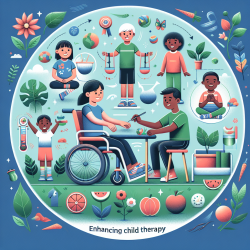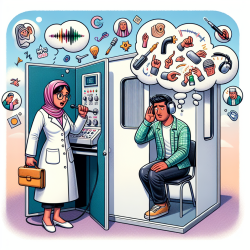In the realm of pediatric therapy, understanding the interplay between social and environmental determinants of health (SDOH and EDOH) is critical for optimizing outcomes for children with long-term movement impairments. The recent research article, "Social and environmental determinants of health among children with long-term movement impairment," provides invaluable insights into how these factors influence child development and therapy outcomes. This blog aims to translate these findings into actionable strategies for practitioners.
Key Takeaways from the Research
The study emphasizes the significant impact of both social and environmental factors on the health and functioning of children with mobility impairments. Using the World Health Organization’s International Classification of Functioning, Disability, and Health (ICF) as a framework, the research highlights several critical areas:
- Neighborhood Socioeconomic Status: Children from socioeconomically disadvantaged neighborhoods often have worse health outcomes and face more significant barriers to accessing care.
- Environmental Factors: Factors such as air quality, access to green spaces, and neighborhood safety can significantly affect a child's ability to participate in physical and social activities.
- Personal Factors: Individual characteristics like race, ethnicity, and socioeconomic status can further influence the impact of environmental factors on health outcomes.
Implementing Research Findings in Practice
To improve therapy outcomes for children with long-term movement impairments, practitioners can adopt the following strategies:
- Comprehensive Assessments: Incorporate assessments of SDOH and EDOH into the initial evaluation process. This can include gathering information on the child’s living conditions, neighborhood characteristics, and family socioeconomic status.
- Personalized Interventions: Tailor therapy plans to address the specific social and environmental challenges faced by each child. For instance, children from high-traffic areas might benefit from more indoor physical activities to avoid exposure to air pollution.
- Collaborative Care: Work with other healthcare providers, social workers, and community organizations to create a supportive network that addresses both medical and social needs.
- Policy Advocacy: Advocate for policies that improve access to healthcare and enhance the living conditions in disadvantaged neighborhoods. This could include pushing for better public transportation options or safer playgrounds.
Encouraging Further Research
While the current research provides a solid foundation, there is a need for more empirical studies that explore the nuanced interactions between SDOH, EDOH, and therapy outcomes. Practitioners are encouraged to contribute to this growing body of knowledge by conducting their own research and sharing their findings with the broader community.
Conclusion
Understanding and addressing the social and environmental determinants of health is crucial for improving therapy outcomes for children with long-term movement impairments. By integrating these factors into assessments and interventions, practitioners can create more effective, personalized therapy plans that enhance the overall well-being of their young patients.
To read the original research paper, please follow this link: Social and environmental determinants of health among children with long-term movement impairment.










